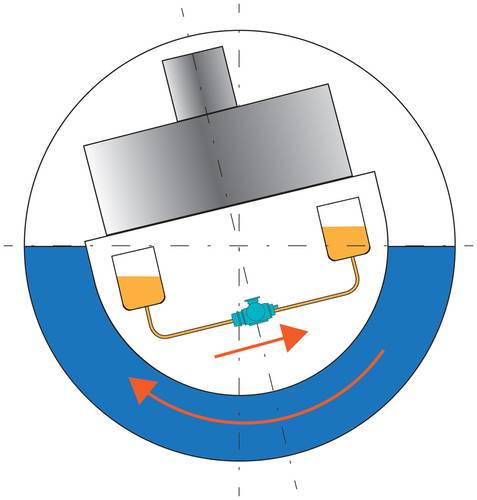Leistritz Debuts Three New Pumps
The offshore oil and gas industry uses Floating Production, Storage and Off-loading (FPSO) vessels to process and store gas or oil until it can be unloaded onto tankers or forwarded through a pipeline. Leistritz Screw Pumps are responsible for boosting the produced water into a hydro cyclone where the remaining oil and sand will be extracted.
Since 1924 Leistritz Pumpen GmbH has been manufacturing screw pumps for almost any application in the shipbuilding industry and has established itself as a leader worldwide. At this year’s SMM the company presented its latest pump developments for various tasks: unloading bitumen and asphalt tanks, compensating undesired heeling and emptying tanks in the event of an accident.
Universal Cargo Pump
“Great demands are postulated from cargo screw pumps, which have to properly unload the full range of high to low viscous products,“ said Heinz-Dieter Roß, Managing Director, Leistritz Pumpen GmbH. “With tank depths of more than seven or eight meters things become quite difficult.” The reasons for this are: Standard deck installations of pumps are subject to cavitation problems. Furthermore, proper stripping and draining of the tank is not provided. The Universal Cargo Pump is a pump system comprising pumps from the series L2 and L5 which are installed in a separate barrel, normally hanging from the deck in the aft cargo tank. The installation inside the barrel omits the need of an otherwise required pump room. The barrel works as a large suction chamber providing the pump with additional suction ability. The tank can almost be completely emptied of all product quantities (even high viscous fluids like bitumen or asphalt) which are handled by the pump. With at least two pumps installed in a barge, each pump can work with full unloading capacity.
Anti-Heeling Pump
Another issue Leistritz focused on is the further development of anti-heeling systems. Johannes Döring explains: “Such systems correct undesired tilts by pumping ballast water back and forth between the heeling tanks. Reversible propeller pumps are the most common pumps used on anti-heeling systems for ballast water flow rates of more than 300 cu. m./hr. Systems with flow rates less than 300 cu. m./hr. usually work with a non-reversible centrifugal pump which needs a complex four-valve system for the reverse mode.“ Leistritz does it differently: With the Leistritz Pump L2NG the company introduces a 2-spindle positive replacement pump granting a speed-controlled and reversible operation. It is suitable for pressures of up to 3 bar and flow rates of 10 to 400 cu. m./hr. “This is an important advantage which also facilitates the installation in smaller ships,” says Döring. Another benefit is the direct correlation of pump flow and pump speed as well as the rather low impact of varying operating pressures, allowing a very smooth and accurate flow control.
Oil Recovery Pump
“When an accident at sea happens, not only the ship’s cargo but also the ship’s fuel supply is at risk,“ said Heinz-Dieter Roß in describing the initial idea behind the third novelty introduced at the SMM: the Leistritz Oil Recovery Pump. It is a 3-spindle pump which is not only used in a Fast Oil Recovery System (FOR), which is a pre-installed, passive system on ships to empty leaking tanks in case of damage. It can also be used as an independent system. “The challenge in designing such a pump was the fact that it had to be small enough to fit into a pipe to be compatible with the FOR system,” said Roß. The previous oil recovery system involves injecting seawater into the tank using a pre-installed auxiliary pipe. The oil which is lighter and relatively insoluble in water is pushed upwards through a disposal pump. The oil is pumped out there and the contaminated water remains. But in a leaky tank this principle is useless.
(As published in the October 2014 edition of Maritime Reporter & Engineering News - http://magazines.marinelink.com/Magazines/MaritimeReporter)



















